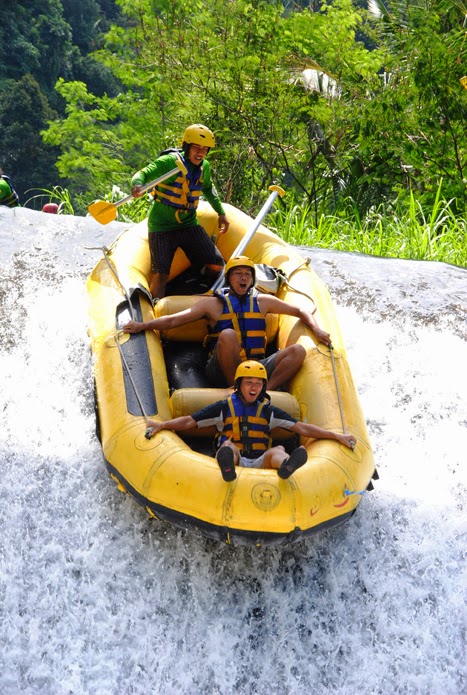Rafting or white water rafting is the recreational outdoor activity of using an inflatable raft to navigate a river or other bodies of water. This is often done on white water or different degrees of rough water, in order to thrill and excite the raft passengers. The development of this activity as a leisure sport has become popular since the mid-1970s, evolving from individuals paddling 10 feet (3.0 m) rafts with double-bladed paddles to multi-person rafts propelled by single-bladed paddles and steered by a tour guide at the stern. It is considered an extreme sport, and can be fatal.
Otherwise known as the International Scale of River Difficulty, below are the six grades of difficulty in white water rafting. They range from simple to very dangerous and potential death or serious injuries.
Grade 1: Very small rough areas, might require slight maneuvering. (Skill level: very basic)
Grade 2: Some rough water, maybe some rocks, might require some maneuvering. (Skill level: basic paddling skill)
Grade 3: Whitewater, small waves, maybe a small drop, but no considerable danger. May require significant maneuvering.
Grade 4: Whitewater, medium waves, maybe rocks, maybe a considerable drop, sharp maneuvers may be needed.
Grade 5: Whitewater, large waves, large volume, possibility of large rocks and hazards, possibility of a large drop, requires precise maneuvering.
Grade 6: Class 6 rapids are considered to be so dangerous that they are effectively unnavigable on a reliably safe basis. Rafters can expect to encounter substantial whitewater, huge waves, huge rocks and hazards, and/or substantial drops that will impart severe impacts beyond the structural capacities and impact ratings of almost all rafting equipment. Traversing a Class 6 rapid has a dramatically increased likelihood of ending in serious injury or death compared to lesser classes.
Private Driver in Bali The ultimate in personal customized tours with a private driver guide dedicated to your well being. The tours are all yours: photo-stops, breaks at your convenience. Discover Bali at your own pace, either on a 5 or 10 hours tour, with us The difference between others and us? WE CARE
Subscribe to:
Post Comments (Atom)
-
The village that located around 6 kilometer from the closest city Bangli or 1 1 kilometer from KUbu village has 750 populations by the ...
-
“ Gede - best driver in Bali ” Reviewed June 4, 2014 NEW Gede is a great driver, reliable and he knows what he is doing. He drove us ...
-
To enter Bali your passport must be valid for a minimum of six months from your date of arrival. Travellers holding passports from some cou...


No comments:
Post a Comment